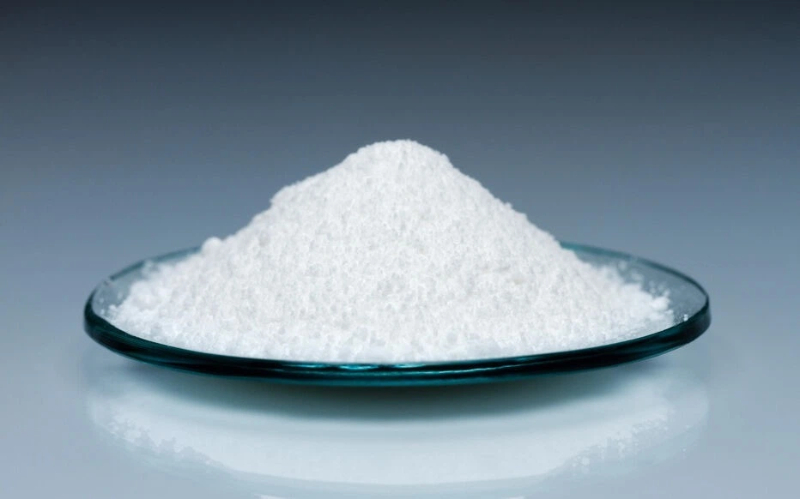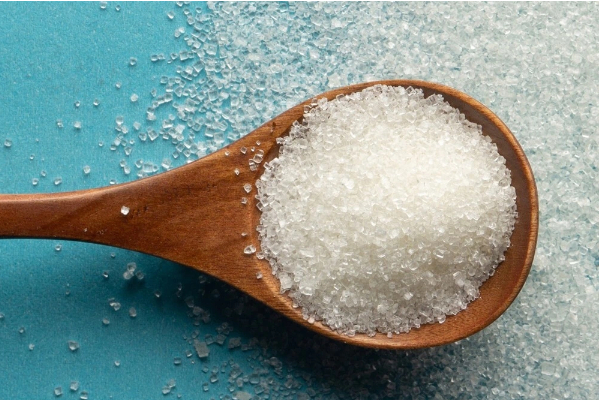







Content Menu
● Why Is Aspartame Popular Among Manufacturers?
>> 1. High Sweetness, Low Cost
>> 3. Taste Profile Similar to Sugar
>> 4. Versatility in Formulations
● Main Applications of Aspartame
>> Aspartame in Pharmaceuticals and Health Supplements
>> Aspartame in Nutritional and Sports Products
● How Aspartame Is Manufactured
>> 2. Isolation and Purification
>> 4. Crystallization and Final Processing
● Aspartame and Health Considerations
● How Aspartame Compares to Other Sweeteners
● Aspartame in OEM and Blended Sweetener Formulations
● Environmental and Economic Benefits
● Emerging Trends in Aspartame Use
● FAQ
>> 1. What products most commonly contain Aspartame?
>> 2. Is Aspartame safe for daily consumption?
>> 3. Can Aspartame be used in baking?
>> 4. Is Aspartame suitable for diabetics?
>> 5. How does Aspartame compare to natural sweeteners like stevia?
Aspartame is one of the most widely used artificial sweeteners in the food and beverage industry. With its intense sweetness and low-calorie profile, it has become an essential ingredient for manufacturers looking to reduce sugar content while maintaining great taste. But what exactly is Aspartame used for, and why is it so popular among both producers and consumers?

Aspartame is a low-calorie sweetener made from two amino acids: aspartic acid and phenylalanine. It is about 200 times sweeter than sucrose (table sugar), which means only a tiny amount is needed to achieve the desired sweetness. Due to this potency, Aspartame is used in a wide variety of products where sugar reduction is key.
Commonly, Aspartame is found in:
- Diet sodas and soft drinks
- Sugar-free chewing gum and candies
- Low-calorie desserts and yogurts
- Pharmaceutical tablets and chewables
- Nutritional supplements and protein shakes
Aspartame delivers intense sweetness, allowing food and beverage manufacturers to use less product, significantly lowering production costs. This makes it an economical choice for large-scale commercial use.
Because Aspartame contains only about 4 calories per gram and is used in minute amounts, it contributes virtually no calories to products—ideal for "diet," "sugar-free," and "low-calorie" labeling.
Aspartame is favored for its clean, sugar-like taste with minimal aftertaste. Unlike some artificial sweeteners, it mimics the sweetness curve of real sugar, ensuring balanced flavor in beverages and desserts.
Aspartame blends easily with other sweeteners and ingredients, making it suitable for combination formulas like sugar blends, functional beverages, or health-oriented confectionery products.
Beverages are by far the largest market for Aspartame. It is used extensively in:
- Carbonated soft drinks (diet sodas)
- Flavored waters and iced teas
- Sports and energy drinks
- Instant drink powders
Its stability in cold beverages and ability to dissolve easily make it perfect for liquid applications. However, it's sensitive to high temperatures, which limits its use in baked goods or pasteurized drinks.
Aspartame adds sweetness to many low-sugar foods, including:
- Sugar-free yogurt
- Pudding, jellies, and dessert mixes
- Cereal bars and breakfast cereals
- Chewing gum and candy
In these products, Aspartame provides sweetness without the heaviness of sugar, helping manage calorie intake and glycemic response.
It's widely used in:
- Chewable tablets
- Vitamin supplements
- Oral medications and syrups
- Effervescent tablets
In pharmaceutical applications, Aspartame masks unpleasant tastes while maintaining a low-calorie and sugar-free profile, ideal for diabetic and calorie-conscious patients.
Nutrition bars, protein shakes, and electrolyte drinks use Aspartame to enhance flavor without compromising their healthy, low-calorie image. The sweetener ensures palatability while supporting fitness and weight management goals.

Aspartame synthesis involves a complex, multi-step process primarily using the amino acids aspartic acid and phenylalanine. The production can be broken down as follows:
Specially selected bacteria are cultivated in controlled fermentation tanks containing nutrients such as molasses, glucose, sucrose, and nitrogen sources like ammonia. These bacteria produce mass quantities of aspartic acid and phenylalanine essential for aspartame synthesis.
After fermentation, bacterial biomass is separated using centrifugation. Amino acids are extracted and purified through ion-exchange chromatography and crystallization processes to obtain high-purity raw materials.
The purified amino acids undergo chemical reactions. Phenylalanine is modified to methyl phenylalanine, and aspartic acid is chemically protected to prevent unwanted reactions. Under controlled conditions of temperature and timing, the two amino acids are combined to form the Aspartame dipeptide.
Crystallization forms solid Aspartame which is reacted further with acetic acid in the presence of catalysts. After completing synthesis, the product undergoes distillation and recrystallization to ensure purity. The final Aspartame powder is dried, filtered, and packaged for distribution around the world.
This process requires sophisticated equipment and stringent quality control to meet food-grade standards set by regulatory bodies.
Aspartame has been extensively analyzed and deemed safe by global food safety authorities including the FDA, EFSA, and WHO. It is considered safe for the general population when consumed within acceptable daily intake limits.
The primary exception is individuals with phenylketonuria (PKU), a hereditary disorder that impairs metabolism of phenylalanine, a component of Aspartame. Products containing Aspartame must carry warnings for people with PKU.
| Sweetener | Sweetness vs. Sugar | Calorie Content | Heat Stability | Primary Use |
|---|---|---|---|---|
| Aspartame | 200x | Very low | Low | Cold drinks, dairy |
| Sucralose | 600x | Zero | High | Baking, processed foods |
| Acesulfame-K | 200x | Zero | High | Beverages, blends |
| Stevia | 200–300x | Zero | High | Natural sweetener option |
| Erythritol | 70x | 0.24 kcal/g | High | Sugar replacement in foods |
Aspartame stands out for its sugar-like taste, making it popular in beverages where clean flavor is essential. However, its limited heat stability makes it less suitable for baking compared to sucralose or stevia.
Aspartame is often formulated in blends with other sweeteners like sucralose or acesulfame potassium (Ace-K) to improve sweetness profile, enhance taste synergy, and optimize cost-effectiveness. For example, a 1:1 Aspartame–Ace-K blend is frequently used in diet sodas and flavored waters.
Many manufacturers partner with specialized factories to develop custom green formulations that meet regional taste preferences and regulatory requirements through OEM/ODM services.
Using Aspartame reduces reliance on sugar production, which involves intensive agricultural resources. It lowers transport volume due to its potency and decreases storage and handling costs. Overall, Aspartame contributes to more sustainable practices in the food industry.
As consumer demand for low-sugar, health-conscious products grows globally, Aspartame remains relevant with ongoing research focused on:
- Enhancing heat stability for broader applications
- Expanding into premium functional beverages
- Use combined with polyols in bakery and confectionery
- Penetration into emerging markets
Manufacturers continue to innovate with Aspartame as part of the sugar-reduction toolkit.
Aspartame is a widely utilized artificial sweetener with a sugar-like taste and low-calorie content, playing a vital role in beverages, foods, pharmaceuticals, and nutritional products. Its extensive safety record, manufacturing sophistication, and versatility make it a go-to ingredient for sugar reduction. Through blended sweetener formulations and OEM/ODM customization, Aspartame supports manufacturers in meeting modern health and market demands.

Aspartame is commonly found in diet sodas, sugar-free gums, flavored yogurts, protein shakes, and chewable vitamins.
Yes. Regulatory agencies like FDA and EFSA have confirmed its safety within established daily intake guidelines.
No. Aspartame breaks down at high temperatures, so it is not recommended for baked goods; other sweeteners like sucralose are preferred.
Yes. Aspartame does not affect blood sugar levels, making it safe for people with diabetes.
Aspartame is an artificial sweetener with a taste profile close to sugar, whereas stevia is plant-based and calorie-free but may have a slight herbal aftertaste.
[1](https://factsonnutrasweet.weebly.com/manufacturing-process.html)
[2](https://www.tengerchemical.com/news/aspartamefactory-5518.html)
[3](https://patents.google.com/patent/EP0036258A2/en)
[4](https://patents.google.com/patent/EP0091330A1/en)
[5](https://www.safefoodfactory.com/en/knowledge/35-aspartame/)
[6](https://www.echemi.com/cms/2132834.html)
[7](https://en.wikipedia.org/wiki/Aspartame)
[8](https://ginhong.com/how-are-artificial-sweeteners/)
[9](https://www.dsbiochemical.com/news/understanding-the-aspartame-production-process-and-its-impact-on-food-industry-trends.html)
[10](https://www.youtube.com/watch?v=oCzwsoagPHE)
